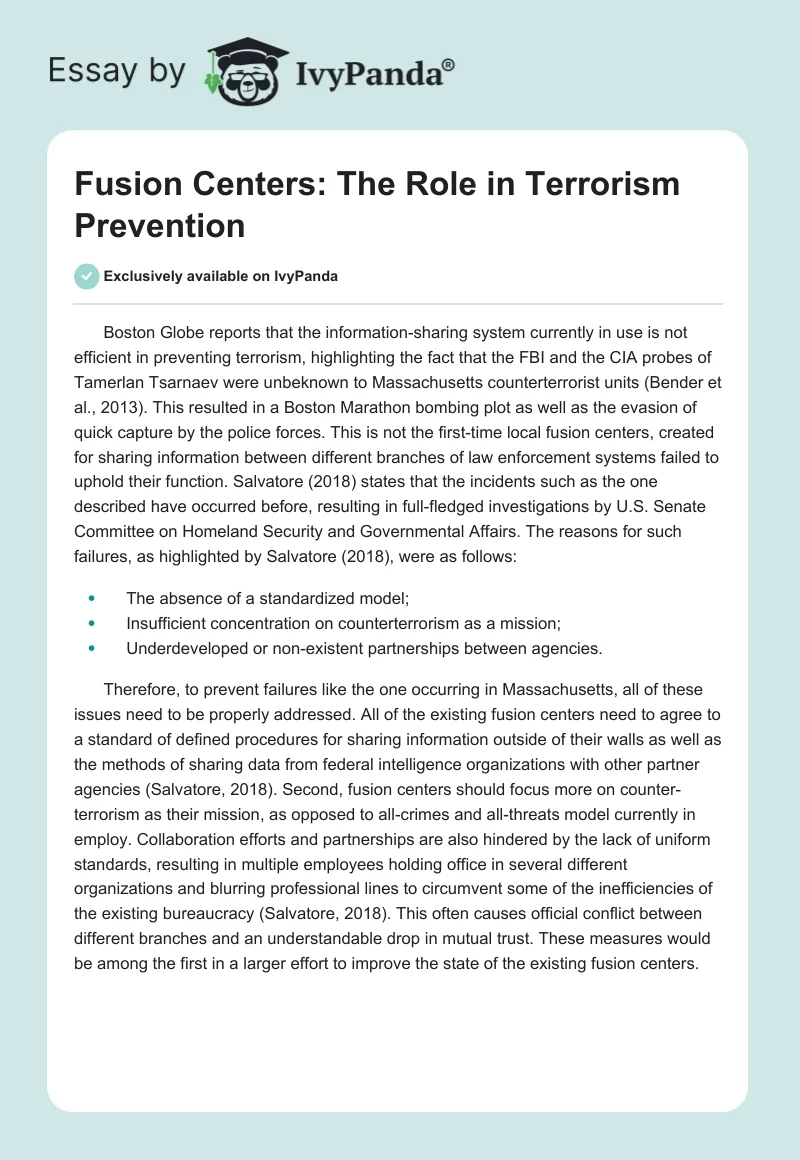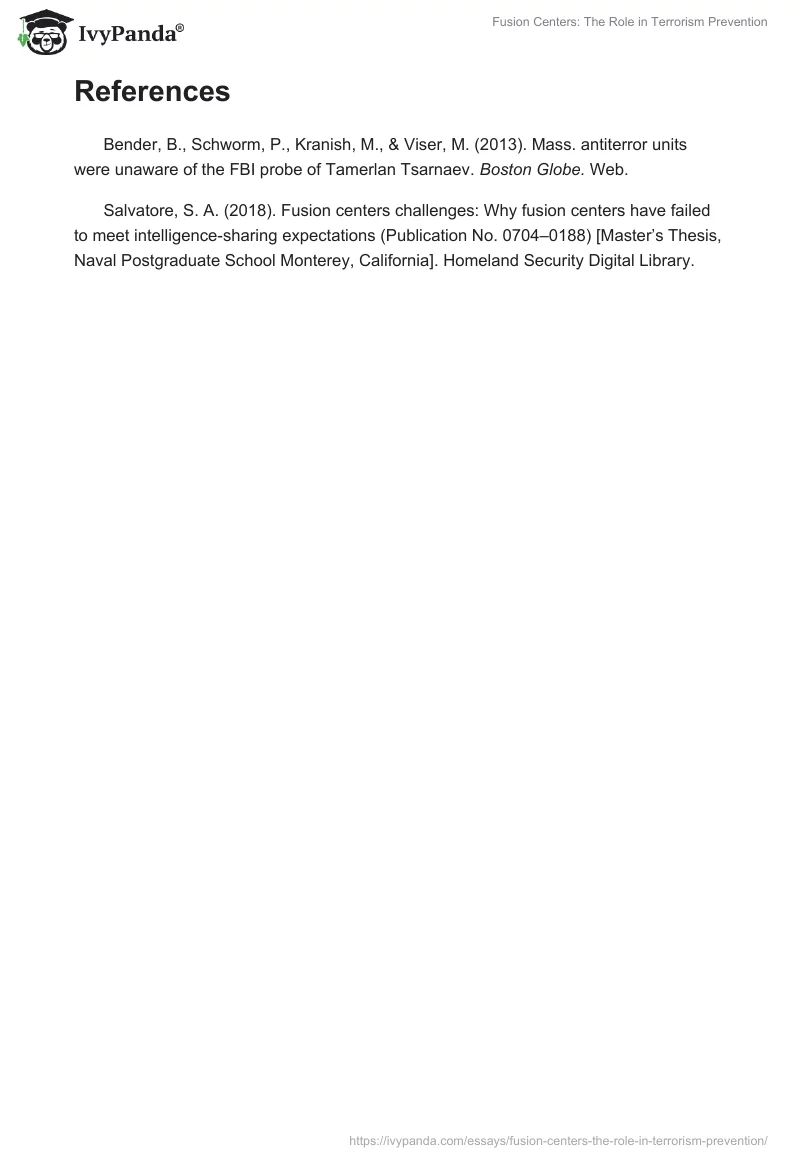Boston Globe reports that the information-sharing system currently in use is not efficient in preventing terrorism, highlighting the fact that the FBI and the CIA probes of Tamerlan Tsarnaev were unbeknown to Massachusetts counterterrorist units (Bender et al., 2013). This resulted in a Boston Marathon bombing plot as well as the evasion of quick capture by the police forces. This is not the first-time local fusion centers, created for sharing information between different branches of law enforcement systems failed to uphold their function. Salvatore (2018) states that the incidents such as the one described have occurred before, resulting in full-fledged investigations by U.S. Senate Committee on Homeland Security and Governmental Affairs. The reasons for such failures, as highlighted by Salvatore (2018), were as follows:
- The absence of a standardized model;
- Insufficient concentration on counterterrorism as a mission;
- Underdeveloped or non-existent partnerships between agencies.
Therefore, to prevent failures like the one occurring in Massachusetts, all of these issues need to be properly addressed. All of the existing fusion centers need to agree to a standard of defined procedures for sharing information outside of their walls as well as the methods of sharing data from federal intelligence organizations with other partner agencies (Salvatore, 2018). Second, fusion centers should focus more on counter-terrorism as their mission, as opposed to all-crimes and all-threats model currently in employ. Collaboration efforts and partnerships are also hindered by the lack of uniform standards, resulting in multiple employees holding office in several different organizations and blurring professional lines to circumvent some of the inefficiencies of the existing bureaucracy (Salvatore, 2018). This often causes official conflict between different branches and an understandable drop in mutual trust. These measures would be among the first in a larger effort to improve the state of the existing fusion centers.
References
Bender, B., Schworm, P., Kranish, M., & Viser, M. (2013). Mass. antiterror units were unaware of the FBI probe of Tamerlan Tsarnaev. Boston Globe. Web.
Salvatore, S. A. (2018). Fusion centers challenges: Why fusion centers have failed to meet intelligence-sharing expectations (Publication No. 0704–0188) [Master’s Thesis, Naval Postgraduate School Monterey, California]. Homeland Security Digital Library.


